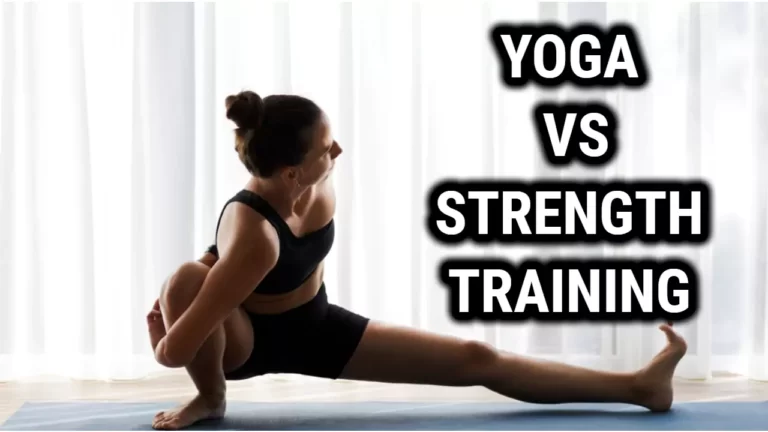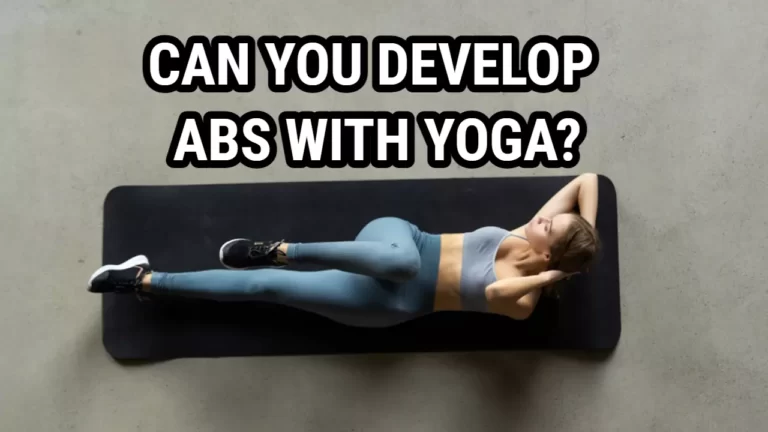How Restorative Yoga Can Help With Weight Loss

Restorative yoga is a gentle and relaxing form of yoga that involves using props to support the body in various poses. The goal of restorative yoga is to relax the body and calm the mind, rather than to build strength or flexibility. It is often done in a quiet, dimly lit room with soft music or other soothing sounds in the background.
Restorative yoga can be beneficial for people of all ages and fitness levels, and is especially helpful for those who are recovering from an injury, dealing with stress, or simply looking to relax and recharge.
How To Perform Restorative Yoga
Here are some steps you can follow to practice restorative yoga:
- Find a quiet, comfortable space where you can relax and unwind. You will need a mat, blankets, pillows, and any other props you might need to support your body in the poses.
- Wear comfortable, loose-fitting clothing that allows you to move freely and relax.
- Begin by lying on your back with your feet resting on the floor and your arms by your sides. Take a few deep breaths and allow your body to relax.
- Choose one or more restorative poses to hold for an extended period of time. Some common poses include Child’s Pose, Supported Fish Pose, Supported Bridge Pose, and Reclining Bound Angle Pose.
- Use props to support your body in the pose. For example, you might use blankets to lift your hips or a bolster to support your back.
- Hold the pose for 5-15 minutes, focusing on your breath and allowing your body to fully relax.
- When you are ready, slowly come out of the pose and take a few moments to rest before transitioning to another pose or ending your practice.
Restorative yoga is all about relaxation and restoration, so there is no need to push yourself or strive for perfection. Simply allow yourself to be present in the moment and let go of any tension or stress.
The Following Are Few Benefits of Restorative Yoga:
- Improved flexibility and muscle tone
- Reduced stress and anxiety
- Improved sleep
- Increased relaxation and calmness
- Improved digestion and overall health
Restorative yoga is a wonderful way to relax and unwind, and can be a valuable addition to any fitness or wellness routine.
How Restorative Yoga Can Contribute to Weight Loss:
While restorative yoga is not a high-intensity workout, it can still contribute to weight loss in a number of ways.
Here are some ways that restorative yoga can help with weight loss:
- Physical Benefits: Restorative yoga can help improve flexibility and muscle tone, which can in turn contribute to weight loss. When the body is more flexible and toned, it is better able to perform physical activities, such as walking, running, or lifting weights, which can help to burn calories and support weight loss.
- Stress Reduction: Restorative yoga is known for its ability to reduce stress and improve mental well-being. When we are stressed, we are more likely to turn to unhealthy behaviors, such as overeating or skipping workouts. By reducing stress through restorative yoga, we can make better choices that support weight loss.
- Improved Sleep: Restorative yoga can help improve sleep quality, which can be an important factor in weight loss. When we get enough rest, our bodies are better able to regulate appetite and metabolism, which can help with weight loss efforts.
Restorative yoga can be a valuable tool for weight loss by improving physical fitness, reducing stress, and improving sleep, all of which can support a healthy weight.
Is Restorative Yoga Good For Beginners?
Yes, restorative yoga can be a good choice for beginners because it is a gentle and relaxing form of yoga that involves holding poses for longer periods of time with the support of props, such as blankets and bolsters.
This can help to ease the body into relaxation and reduce the risk of injury. Restorative yoga can be especially beneficial for those who are dealing with stress or who have physical or mental conditions that may make more strenuous forms of exercise challenging.
It is always a good idea to speak with a healthcare provider before starting any new exercise routine, especially if you have any underlying health conditions.
Related Read: Vinyasa Yoga For Weight Loss
Tips for Incorporating Restorative Yoga into a Weight Loss Routine:
If you are interested in using restorative yoga as part of your weight loss journey, here are some tips to get started:
- Find a Class or Instructor: One of the best ways to learn restorative yoga is to attend a class or work with an instructor. Look for classes or instructors that specialize in restorative yoga, as they will be able to provide guidance and support as you learn the poses and techniques.
- Create a Home Practice: If you are unable to attend a class or work with an instructor, you can still practice restorative yoga at home. All you need is a quiet, comfortable space and some basic props, such as blankets, pillows, and blocks. There are also many online resources, such as videos and tutorials, that can help you get started with a home practice.
- Combine with Other Forms of Physical Activity: While restorative yoga is not a high-intensity workout, it can still be an important part of a weight loss routine when combined with other forms of physical activity, such as cardio or strength training. Consider incorporating restorative yoga into your routine a few times a week, and combining it with other forms of exercise to create a well-rounded fitness routine.
Case Studies or Personal Anecdotes of Individuals Who Have Successfully Used Restorative Yoga for Weight Loss:
There are many individuals who have successfully used restorative yoga as part of their weight loss journey. Here are a few examples:
- Jane: Jane had struggled with her weight for years and had tried every diet and exercise program under the sun, but nothing seemed to work. She was feeling frustrated and ready to give up when a friend recommended she try restorative yoga. At first, Jane was skeptical, but she decided to give it a try.
- After just a few weeks of practicing restorative yoga a few times a week, Jane noticed that she was starting to feel more relaxed and had more energy. As a result, she was able to make healthier choices when it came to her diet and exercise routine. After a few months, she had lost 10 pounds and was feeling more confident and in control of her health.
- Bill: Bill had always been an active person, but as he got older, he found that he was struggling to maintain his weight. He started to feel self-conscious and depressed about his appearance. A friend suggested he try restorative yoga, and he was hesitant at first, but decided to give it a try. After just a few weeks of practicing restorative yoga a few times a week, Bill noticed that he was sleeping better and had more energy.
He also found that he was more mindful of his eating habits and was making healthier choices. As a result, he was able to lose 15 pounds in just a few months and felt better about himself and his health.
These are just a couple of examples of how restorative yoga can be an effective tool for weight loss. By practicing regularly and making other healthy lifestyle choices, restorative yoga can help support weight loss and improve overall health and well-being.
Also Read: How Does Power Yoga Help With Weight Loss?
Conclusion
Restorative yoga can be a valuable tool for weight loss by improving physical fitness, reducing stress, and improving sleep. It is a gentle and relaxing form of yoga that is suitable for people of all ages and fitness levels, and can be practiced in a class or at home.
By incorporating restorative yoga into a weight loss routine, along with other forms of physical activity and healthy lifestyle choices, individuals can experience the many benefits it has to offer.
If you are interested in using restorative yoga as part of your weight loss journey, consider finding a class or instructor, creating a home practice, and combining it with other forms of exercise. With dedication and commitment, restorative yoga can support weight loss and improve overall health and well-being.






